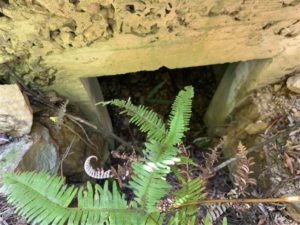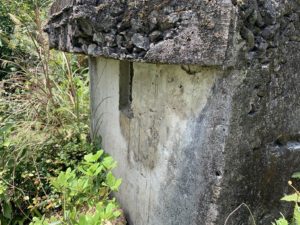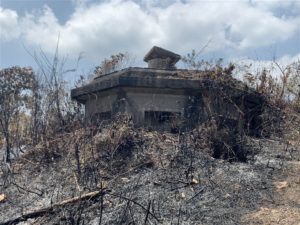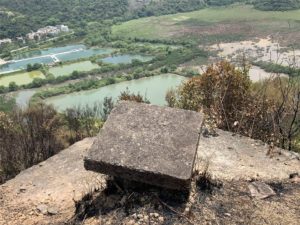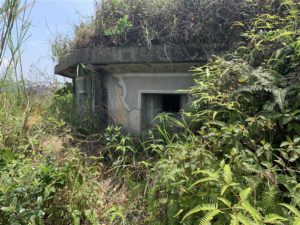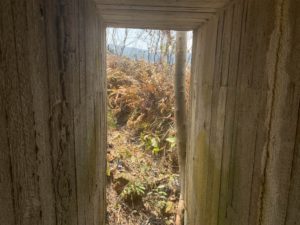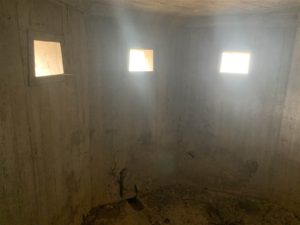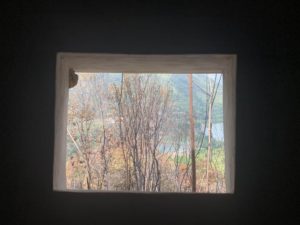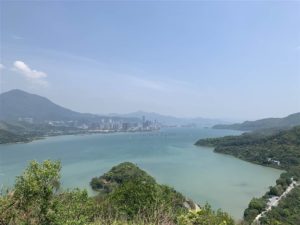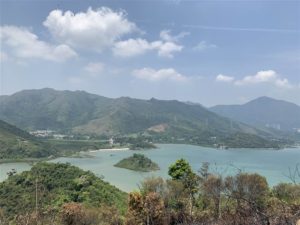Beautiful Sha Tau Kok – Japanese Fortifications in Luk Keng
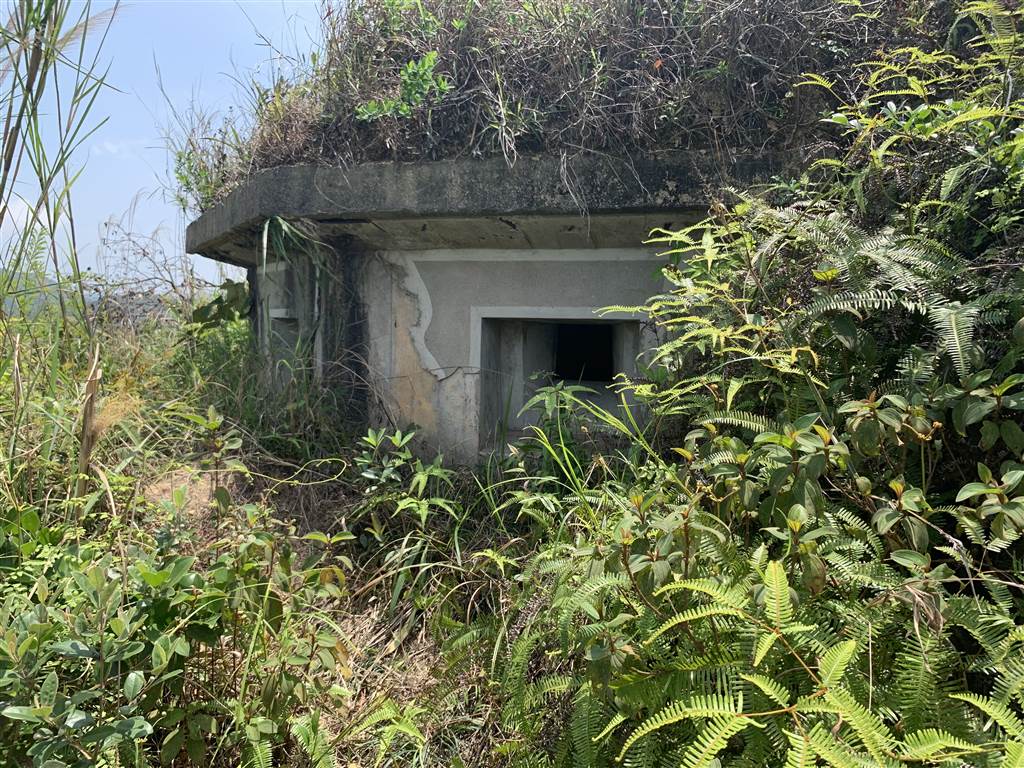
We are seeing warmer days in Hong Kong. I seize every opportunity there is to hike. This day I visited the Japanese fortifications in Luk Keng.
“A bush fire lit up there last week, so I thought it is perfect for exploration,” a young man that I met on the way up the hill told me. “The fire burned down the weed and it would be easier to find the trail to the harder-to-find pillboxes.” He said.
This part of Luk Keng, known to the locals as Hill 121 and quite unlike other scenic trails, is less popular with hikers. Perhaps fewer people in Hong Kong fancy war relics. The trail is also very short, thus in terms of exercise it does not quite serve the purpose. I was pleasantly surprised to meet a like-minded soul, who would be guiding my exploration for the next hour.
Japanese Occupation of Northern New Territories
The Japanese Imperial Army launched its first offensive on Hong Kong on December 8, 1941. Three infantries of the 38th Division crossed the Shenzhen River and arrived in New Territories. The 229th Unit went by the route of Sha Tau Kok and Ta Kwu Ling to Tai Po. The Japanese soldiers then crossed Tolo Harbour and moved through Ma On Shan and Shap Sze Heung to arrive in Sai Kung and Kowloon East.[i]
Japan’s initial success in invading Hong Kong met the resistance of the people. The People’s Anti-Japanese Principal Guerilla Force of Guangdong, also known as the Dongjiang Guerilla Force, had an established presence in the Tai Po, Sai Kung and Sha Tau Kok areas.[ii] That has enabled a safe route for the refugees, protected intellectuals and even British POWs that fled Hong Kong into safety in China via the eastern route.
The Japanese military was well-aware of the Dongjiang Guerilla Force and its resistance efforts in the area. The Pillboxes of Luk Keng belonged to the group of fortifications in Luk Keng, Wu Shek Kok and Tam Shui Hang of the Japanese military. Built during the Japanese occupation of Hong Kong, this fortification consisted of 12 pillboxes, observation posts and a surrounding trench that provided a throughway, connecting most of the pillboxes. The Japanese military’s intention was to fend off the Dongjiang Guerilla Force with these defensive structures, and to guard against entry into Hong Kong by the allied forces from the northeast. However, as it turned out, the structures have never seen a day of battle.
The Luk Keng Pillboxes
The Luk Keng Pillboxes and Observation Posts are a Grade 2 Historic Building. What fascinated me the most, however, was that the Japanese military forced the villagers of the Sha Tau Kok area to build these structures. To note, particularly, the Wong Uk and Chan Uk of Luk Keng Villages. Some of those who were forced to build them are alive today. It is very much a living history, although the structures themselves remain in ruins.
I must take a special note here to introduce this pillbox, lying to the west side of the defensive complex. According to the kind young man that guided me, it would be the most difficult to find. Well, he took me through a path that was obviously not frequented. I could hardly see the tracks. And at some point it required a climb. As in, I was on all fours, grabbing onto any leverage point I managed to find. “This is dangerous,” I thought as I fell two steps back with each step forward. But thankfully he led me and helped me. Certainly, without his guidance, I would have never been able to see this on my own.
Up on the main stretch of the fortification, most of the growth on top was brown from burning. On this sunny day, there was no shade on the top of the pillboxes. The surrounding trench was about 1 to 1.5 metres deep, and that presented a known danger. Overgrown weeds would have blocked a clear view of the trench. Accidents have happened here before where someone fell into the trench. Therefore, hikers beware!
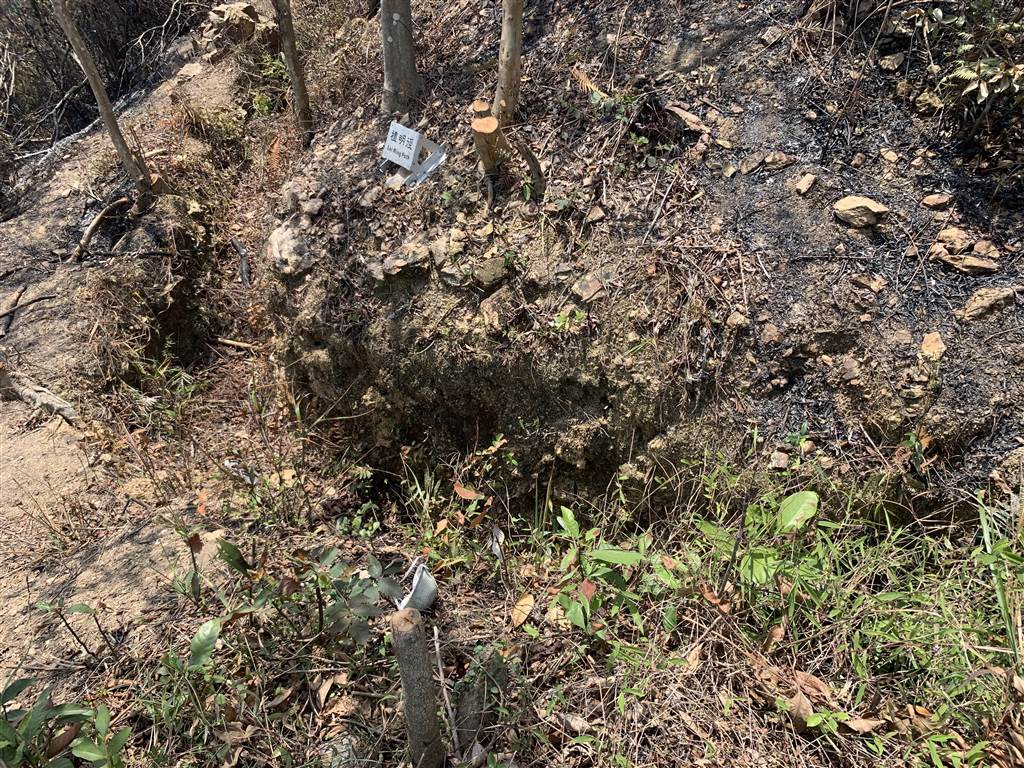
Photo: Lai Ming Path, this sign denotes the trench that surrounds the pillboxes, and the sign was added later.
I did manage to go inside one of these pillboxes. They were perhaps slightly shorter than the other pillboxes I have seen of the British forces. Thanks to the diligence of volunteers who cleaned and weeded them, these in-ground pillboxes were reasonably clean and safe. I enjoyed a bit of cool inside.
Beautiful Sha Tau Kok In View
Finally, short though this trail might be, it was no less scenic. As I climbed up the long set of stairs to reach the hilltop, at each elevation I saw better and better panoramic views. Facing south, I saw the Starling Inlet with the high rises of Shenzhen afar. On the west lays the beautiful fish ponds and the village of Luk Keng. Once at the top, I could see far north onto the Nam Chung area, again with fish ponds throughout, and mountains hovering over them. From afar they could have been mistaken for being rice paddies.
Directions and Dangers
To get to the Luk Keng Pillboxes, arrive at Luk Keng either by private car or by the Green Top Mini Bus Line 56K. Get off at the final stop in Luk Keng. There is a very noticeable, semi-outdoor restaurant there, and the steps up Hill 121 are right next to the restaurant.
There is another staircase going up next to the public toilet a bit farther, but that route leads to a village graveyard and at some point overgrown trees would block the way.
Follow the stairs next to the restaurant. You will be walking up along a deep ditch. The stairs take about twenty to thirty minutes.
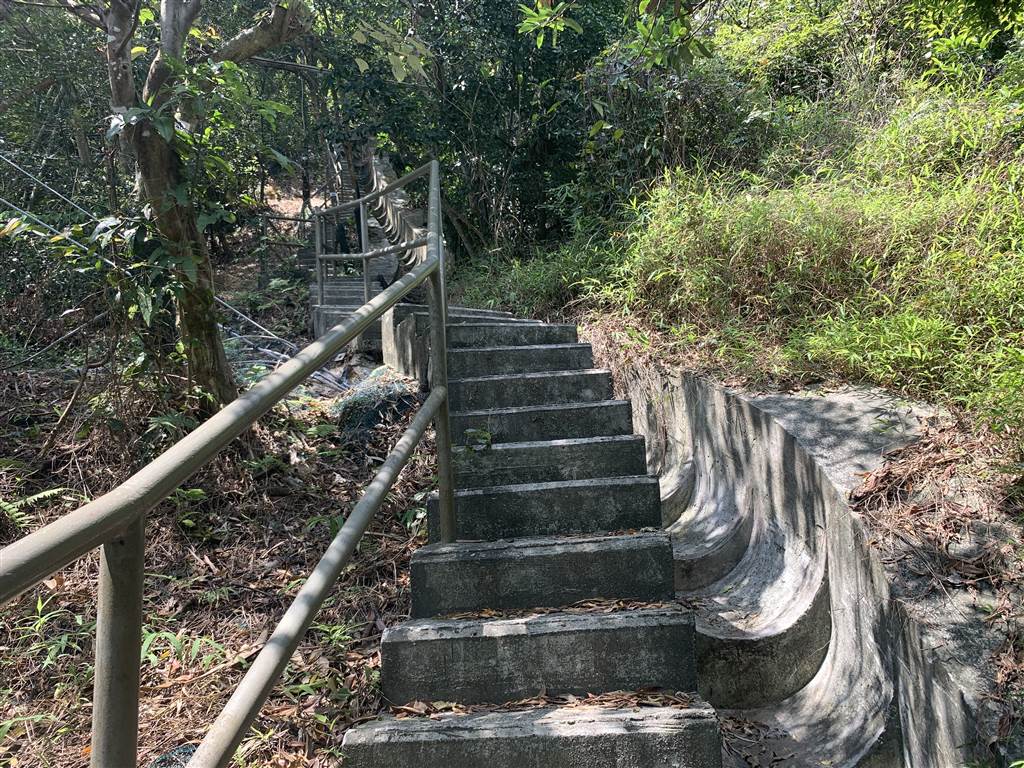
Once at the top of the stairs, enjoy the view of Luk Keng and the Starling Inlet. Make a right and keep on going until you see a well-trodden path up. The way on the left will lead one to the hard-to-find pillbox that I mentioned above, but I do not advise anyone without experience to go that way. It is better to be safe here.
Again, the chief warning is the deep trench surrounding the pillboxes. A missed step can cause grave injuries. Although I went alone, I was surely very glad that I met another hiker who guided me. Therefore, as with always, do not go alone.
[i] Cheung Siu-woo, The Turmoil of War: Tai Po Under Japanese Occupation During the Second World War, Traditions and Heritage in Tai Po (2008) at 204.
[ii] Id. at 205.

